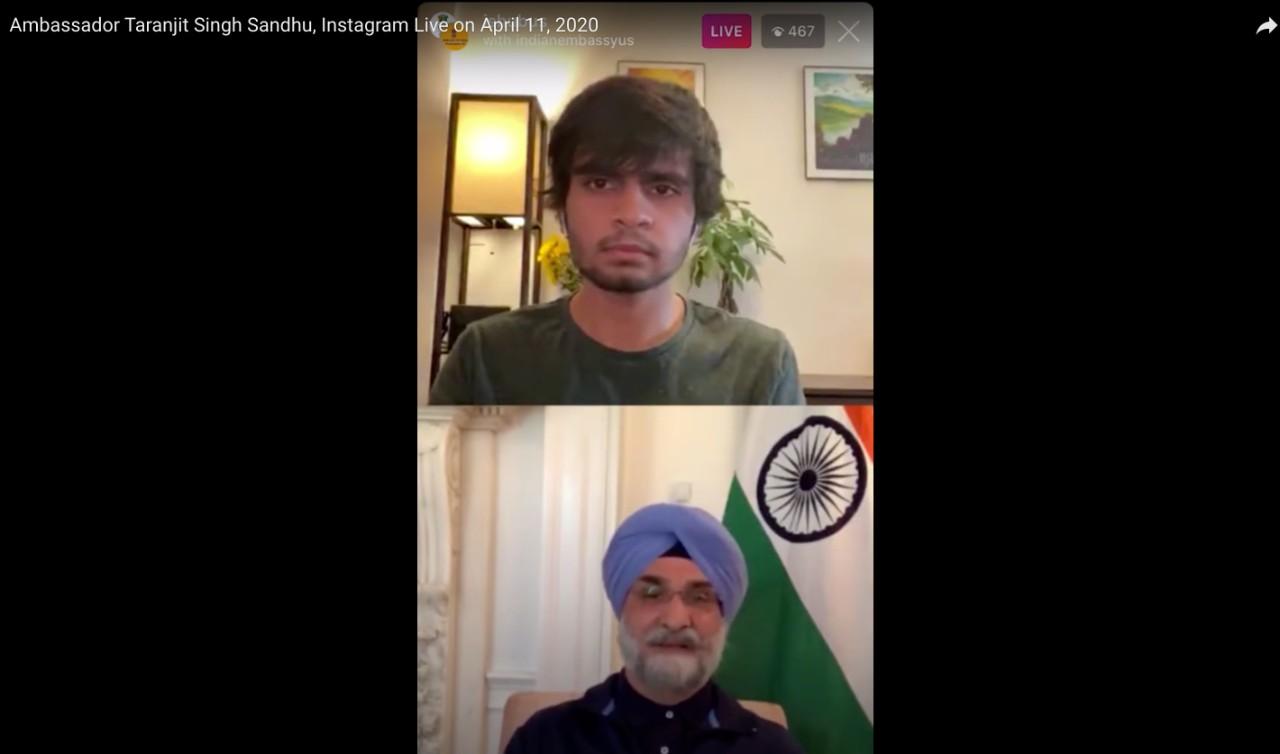Indians stranded in the US due to coronavirus face poverty, eviction
Just before most global travel stopped and India went into lockdown because of the novel coronavirus pandemic, Ujwalla Tate’s J-1 visa to work and learn hospitality services at a hotel in Florida expired. Now she’s stranded, alone, in the US, far from her family, and without a job.
“The hotel where I was working gave us accommodation, where I’m living,” Tate said. “The grocery shops are like 10, 20 miles away, and we don’t have any local transportation. In the building, I have [an] American family who knows me really well so, sometimes they provide me food.”
Thousands of Indian nationals on visas like Tate are stuck in the US, including many students. Sudhanshu Kaushik, executive director of the North American Association of Indian Students, said many were on scholarships, and within a few days, some lost their jobs. Others were evicted or didn’t have enough money to eat.
“I would say that all stakeholders involved, the government, the diplomatic missions, the students and the community — I don’t think they understood the scope of how much this lockdown would affect them.”
“I would say that all stakeholders involved, the government, the diplomatic missions, the students and the community — I don’t think they understood the scope of how much this lockdown would affect them,” he said.
Students’ families in India begged the Indian government to arrange transportation home. Eventually, Indian officials responded that they couldn’t provide flights for so many people.
“In terms of the scope and the logistics, it was an obvious ‘no.’ That it isn’t possible. But even that answer — even that simple, “no” took almost four, five, six days, which created somewhat of a confusion and hysteria among the students because they just didn’t have a definite answer,” Kaushik said.
In an Instagram question and answer session with students that was streamed live April 11, Indian Ambassador to the US Taranjit Singh Sandhu said any travel would invite trouble. He said it would expose students to possible infection, and could also be harmful to their families in India when they arrived home.
“You are in the US. Therefore there is nothing to panic. My strong advice to you is stay put where you are.”
“You are in the US. Therefore there is nothing to panic,” Sandhu said. “My strong advice to you is stay put where you are. We are in touch with you. If you have problem, please come to us, and we will help you out.”
Indian officials created a 24/7 hotline. They enlisted the help of Indian American hotel owners across the US to house people who are stranded. One of those hotel owners is KP Patel, an American-born son of Gujrati Indian immigrants.
“My dad came over from India. Had nothing in his pockets. Pulled himself up,” Patel said. “But it is India that is our motherland.”
Patel says it is his duty to help fellow Indians. He’s reserved half of his rooms in Santa Cruz, California, for local Indian students who were displaced from university housing, or were staying in places that put them at risk.
“For example, I took in three students just over the last few days, and they were in an unsafe environment where six, seven kids were staying in one apartment. [They] didn’t feel safe being there,” he said. “I asked them to come stay with me for a few weeks.”
Now, each student has their own room. Patel’s working with Meals on Wheels to get them food. He said he’ll house them for as long as this emergency lasts.
Read: International students displaced by COVID-19 also face headaches with online classes
But despite efforts by people like Patel, and assurances from the Indian ambassador, Kaushik remains worried. He said it’s hard to reach such a large, spread-out population so quickly. Some Indians affected don’t even have cell phones.
“I think many people are falling through the cracks,” he said.
There’s also a lot of misinformation being spread and scams being run, Kaushik said. In the back of his mind is the question of what happens when this is all over: Will thousands of Indians pack flights to return home?
“Where are you going to quarantine [them]? You already have a lack of places where you can do so, which is a true headache,” he said. “You have a lack of tests that are taking place. So how are we going to mediate that?”
Kaushik said now that the Indian government understands the magnitude of the problem — and the sheer number of people impacted — they’re trying to plan ahead, and answer those questions.
